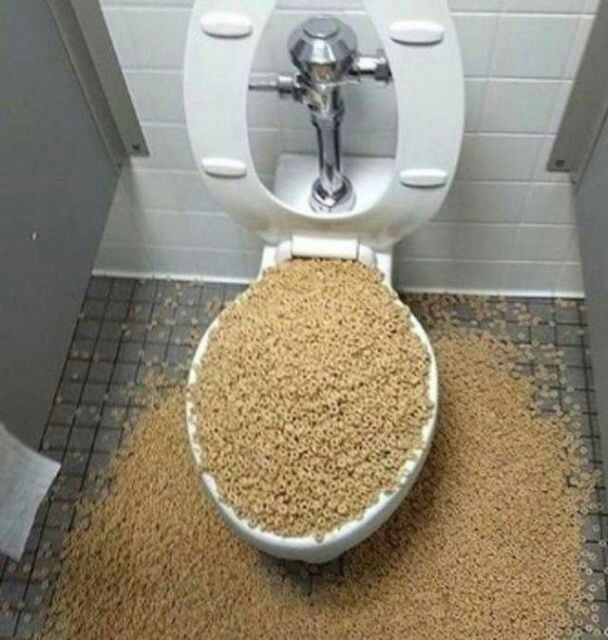Are You Able to Dispose of Food in the Toilet?
Are You Able to Dispose of Food in the Toilet?
Blog Article
On this page down the page you will find a good deal of high-quality information and facts relating to Flushing Food Down the Toilet?.

Intro
Lots of people are frequently confronted with the predicament of what to do with food waste, specifically when it concerns leftovers or scraps. One common inquiry that emerges is whether it's okay to flush food down the commode. In this post, we'll explore the reasons why individuals might take into consideration purging food, the consequences of doing so, and different techniques for correct disposal.
Reasons why people could think about flushing food
Absence of awareness
Some individuals may not understand the potential harm triggered by flushing food down the bathroom. They may wrongly think that it's a safe method.
Comfort
Flushing food down the bathroom may feel like a fast and very easy service to taking care of undesirable scraps, especially when there's no neighboring garbage can available.
Idleness
In many cases, people might simply pick to flush food out of large idleness, without thinking about the effects of their actions.
Effects of flushing food down the toilet
Environmental influence
Food waste that winds up in waterways can contribute to contamination and injury marine ecological communities. Additionally, the water utilized to flush food can strain water resources.
Plumbing issues
Purging food can lead to stopped up pipelines and drains, triggering pricey pipes fixings and hassles.
Kinds of food that ought to not be purged
Fibrous foods
Foods with coarse structures such as celery or corn husks can get tangled in pipes and trigger blockages.
Starchy foods
Starchy foods like pasta and rice can take in water and swell, causing blockages in pipes.
Oils and fats
Greasy foods like bacon or food preparation oils must never ever be flushed down the bathroom as they can strengthen and create obstructions.
Correct disposal methods for food waste
Using a waste disposal unit
For homes geared up with waste disposal unit, food scraps can be ground up and flushed through the plumbing system. However, not all foods appropriate for disposal in this fashion.
Recycling
Certain food product packaging materials can be recycled, minimizing waste and decreasing environmental impact.
Composting
Composting is a green method to take care of food waste. Organic products can be composted and used to enrich soil for horticulture.
The value of proper waste administration
Decreasing ecological harm
Appropriate waste management methods, such as composting and recycling, help lessen pollution and protect natural deposits for future generations.
Shielding pipes systems
By preventing the method of flushing food down the toilet, home owners can avoid pricey pipes repair work and preserve the integrity of their pipes systems.
Verdict
Finally, while it may be appealing to flush food down the commode for comfort, it's important to recognize the possible consequences of this activity. By adopting correct waste management techniques and getting rid of food waste responsibly, individuals can contribute to much healthier plumbing systems and a cleaner environment for all.
THINK TWICE BEFORE FLUSHING FOOD DOWN YOUR TOILET IN FALLBROOK CA
Let’s be honest, we’re really supposed to be tossing rotten or leftover food in the compost bin or trash can. But many people like to place scraps of food down the drain of, say, their kitchen sink. That’s why the garbage disposal was invented: so we can continue to place certain foods down the drain without clogging our drain in the process. Smart.
But not all of us have the luxury of having a garbage disposal installed. So, you might continue to shove food down your sink drain anyway – or worse: you might flush them down your toilet! If you’re guilty of doing the latter, you’re going to want to stop, and here’s why:
Toilet Drains Aren’t Designed to Handle Food!
There’s your answer: food just doesn’t belong in your toilet. It may seem like your toilet drain is wider than the drains of your sinks, but truth be told, that isn’t actually the case. The narrower pipes of your toilet leave your plumbing at risk for clogging if you do happen to flush your food. In addition, food doesn’t break down as quickly that toilet paper and human waste do. In turn, this leaves your toilet at risk for a nasty clog.
Although a flush of a tiny pinch of food every now and then isn’t going to completely damage your toilet, there are certain foods that should absolutely not be flushed in your toilet at all. These include starchy foods like mashed potatoes, grains, hard pieces of food that are slow to break down, and fats and oils.
The latter categories of food are particularly problematic as they may harden, expand as they absorb water, break down slowly in your system, or generally create the perfect obstruction with their gelatinous composition. These are all things you don’t want in your plumbing system!
Experiencing a Toilet Clog?
Nobody’s perfect, and we all make mistakes. Sometimes one of the mistakes people make is flushing food down their toilet and later realizing that it wasn’t the best thing to do once they see that their toilet is now clogged. Uh-oh!

As a keen person who reads on Is it safe to flush food (especially rice) down the toilet?, I thought sharing that piece of content was a great idea. Are you aware of another person who is occupied with the subject? Do not hesitate to promote it. I am grateful for being here. Kindly come visit our website back soon.
Go Company Report this page